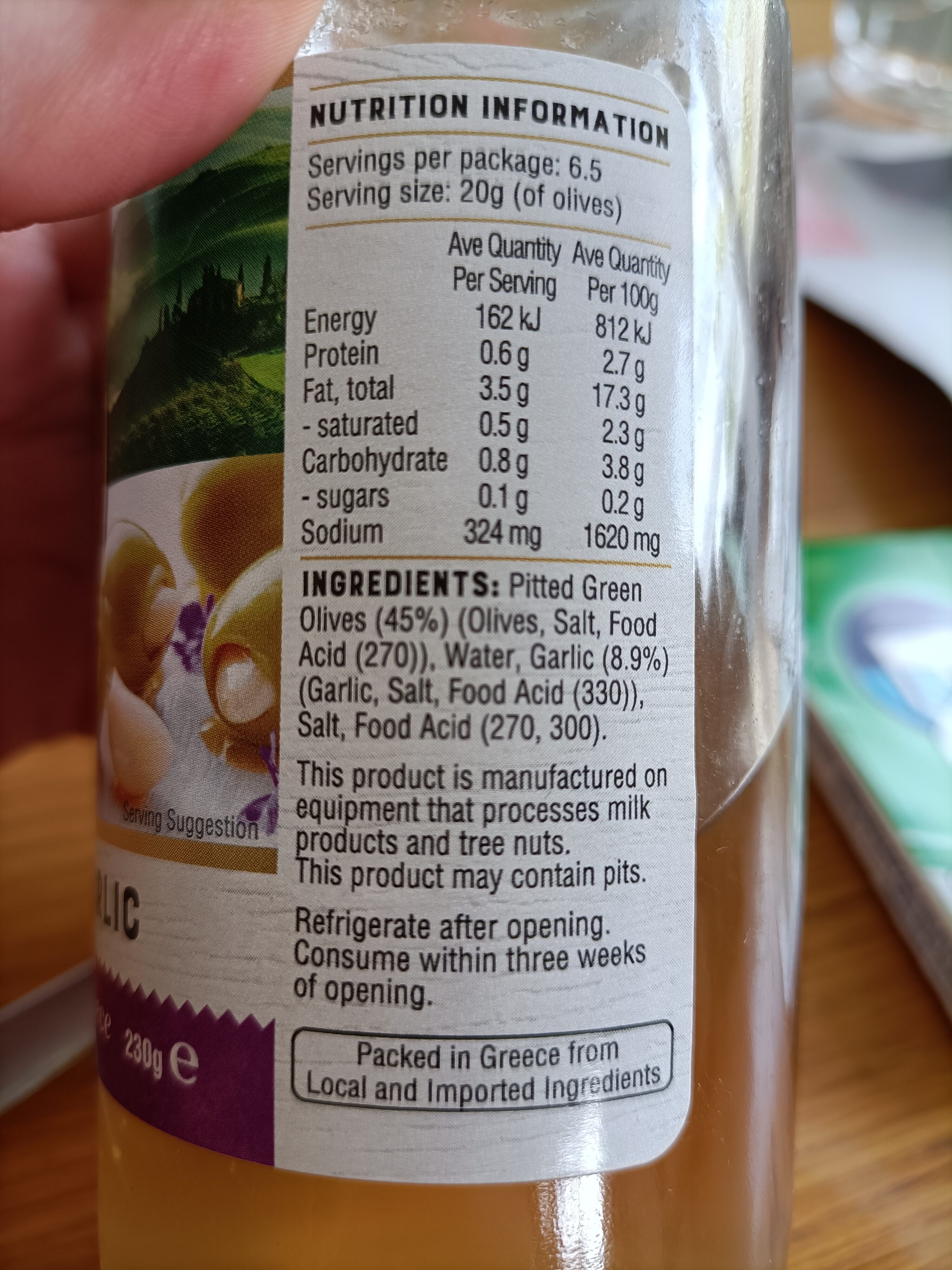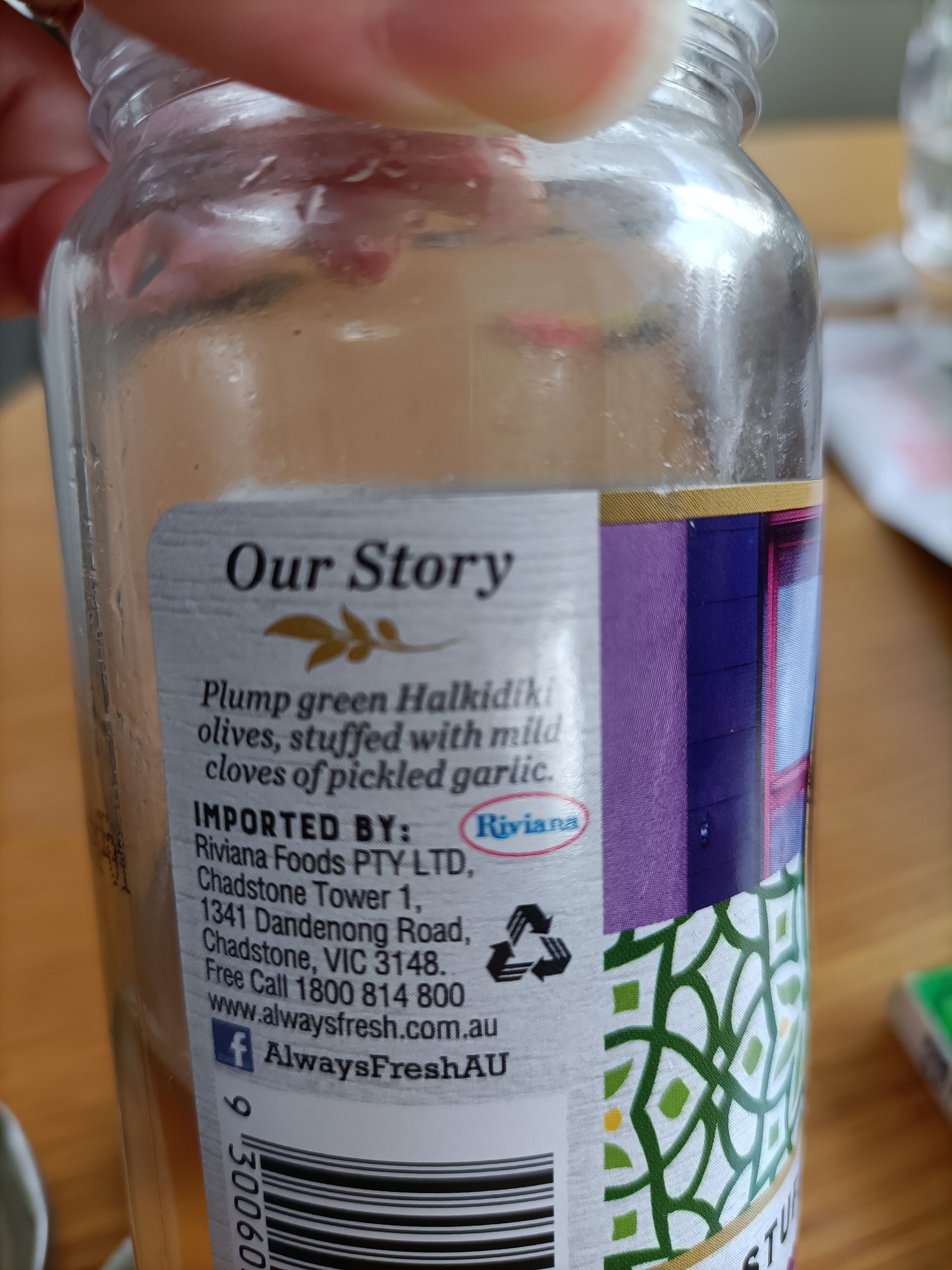stuffed olives - garlic - Always Fresh - 230g
This product page is not complete. You can help to complete it by editing it and adding more data from the photos we have, or by taking more photos using the app for Android or iPhone/iPad. Thank you!
×
Barcode: 9300602366148 (EAN / EAN-13)
Quantity: 230g
Brands: Always Fresh
Categories: Plant-based foods and beverages, Plant-based foods, Pickles, Olive tree products, Plant-based pickles, Olives, Green olives
Countries where sold: Australia
Matching with your preferences
Report a problem
Data sources
Product added on by smoothie-app
Last edit of product page on by smoothie-app.
If the data is incomplete or incorrect, you can complete or correct it by editing this page.










